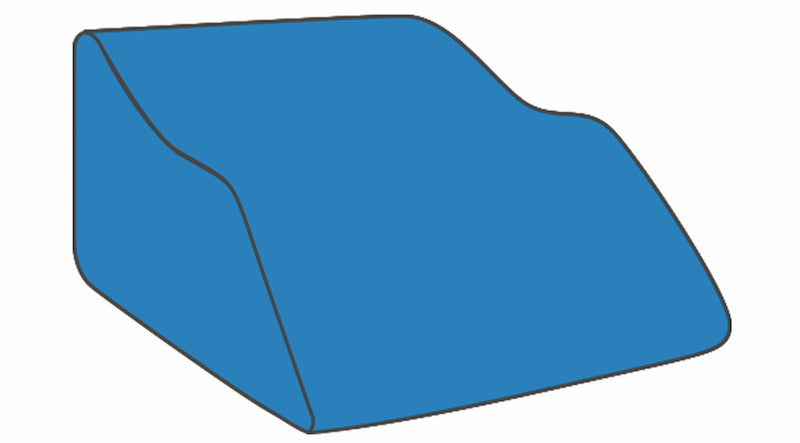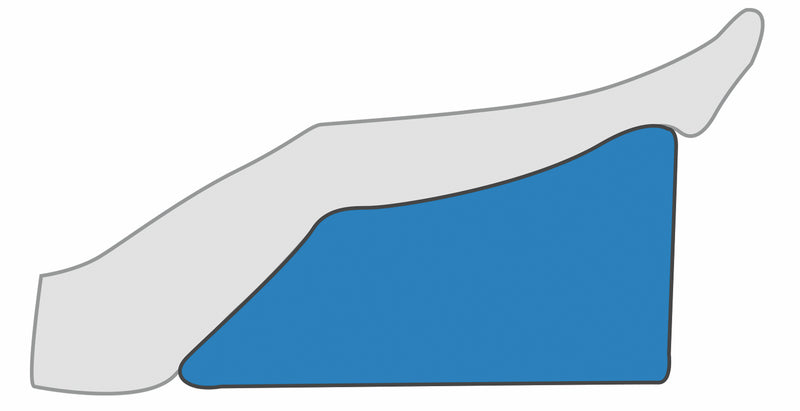How to Use
Developed by a Board Certified Vascular Surgeon, The Lounge Doctor Leg Rest is The only patented leg rest on the market!

Easy Set Up
No Matter which Lounge Doctor you choose, set up is EASY! Simply place your Lounge Doctor on a bed or sofa, and lay down placing your legs over the leg rest.

Correct Position
Position the leg rest, so that the leading edge is positioned just under where your legs meets your buttocks.

Lay Flat
Your back should be flat and your legs elevated above your heart. If you become short of breath while lying flat, it is OK to elevate your back as needed.
Does it really matter how we elevate our legs? YES!

We need to elevate our legs in the most efficient position possible because we do not have all day to lay around with our legs elevated. Simply lying flat will reduce leg swelling; however, it will take many hours. Let’s now review the ideal position for leg elevation in order to reduce swelling, maximize flow in the veins and be comfortable.
The Lounge Doctor Leg Rest accomplishes all of these goals. It allows you to use gravity to your advantage rather than fight against it. This is truly the best position to elevate your legs.
1. Back Flat
First, the legs need to be elevated above the level of the heart, in order to lower the hydrostatic pressure in the capillary, which is the driving force for reabsorption of the accumulated interstitial fluid. The dotted line shows the level of our heart.
2. Tilted Thighs
Next, studies have shown that tilting the thigh more than 45 degrees can impair venous outflow. Some studies have shown kinking of the femoral vein above 45 degrees. Other studies have shown that elevating the thighs above 45 degrees is uncomfortable.
3. Bent Knee
Third, based on studies, the knee should be bent. Having the knee straight can result in kinking of the popliteal vein against the tibia. Ultrasound studies have shown partial and complete obstruction of the popliteal vein when the knee is straight.
Overall, this is a more comfortable position. We naturally bend our joints slightly so the tendons around the knee are relaxed. This is a more comfortable position. In order to relax, the tendons around the knee, the knee must have a 20 to 30 degree bend.
4. Lower Leg Tilt
Lastly, the lower leg (knee to ankle) needs to be tilted 15 to 20 degrees to allow gravity to augment venous and lymphatic flow in the calf.



